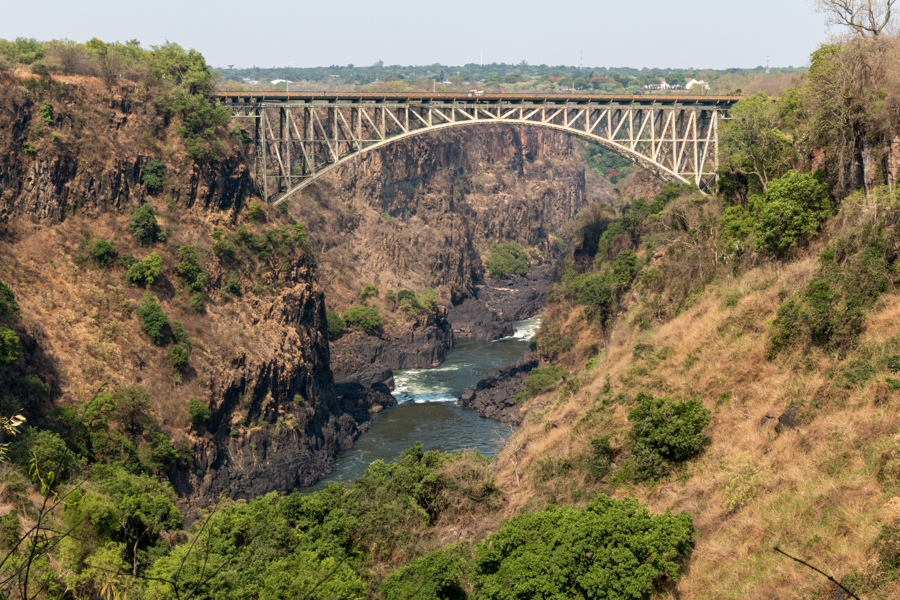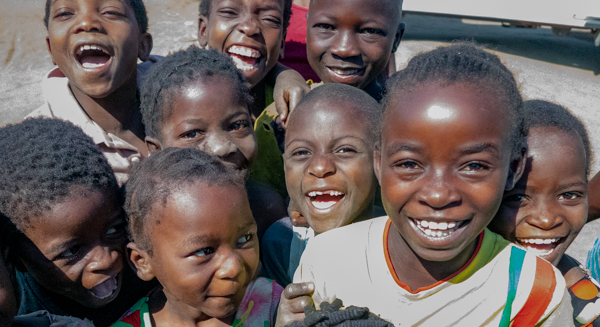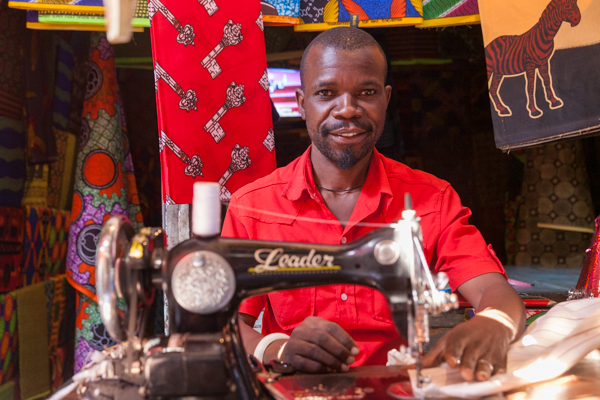Zambia

Zambia is a country of some 15 million people most of whom are urbanized leaving the more rural areas sparsely populated. As most of our ramblings were in the less populated areas our observations were predominantly of that part of the population still existing on subsistence farming and livestock
Initiation
Well we intended to cross at Kazengula originally because it is a ferry crossing and so sounded fun. In reality there are so many ferries in Zambia it is unnecessary to seek them out specifically. Believe me you will be using many ferries before you leave the country. Perhaps understanding that fact our fellow travelers were sceptical and said it was better to go through Katima so we revised the plan only to find that the Toyota dealer for Dudleys coolant top up was in Kazengula so we were back on plan A
We went into Kasane and bought provisions and had a fantastic breakfast at a little place called the Old House (recommended if you are mooching around town) and so made a leisurely morning before picking up the coolant and heading for the ferry. So far, so good. We exited Botswana smoothly We rolled onto the ferry without delay, a pontoon big enough for 2 big trucks and a couple of cars and from there we pulled up to the Zambian border post. The warning bells started when we were mobbed by helpful " guides" rather in the old Mozambique fashion. Wanting to guard the car and direct us to the office. We assured them we were quite capable of staggering 50 m from the car to the border post office alone but 3 tagged along anyway. It starts quite normally.
There is a visa window $50 each and then immigration and passport and customs for the car. All quite routine but after that it becomes more chaotic. First all the fees (except the visa) must be paid in kwatcha which we did not have and had no way of getting (the first bank is well beyond the border) and then you have to navigate a jumble of offices and back rooms to pay road tax, carbon tax, toll tax and goodness knows what else tax. By this point your head is spinning and your wallet empty. There is a special process to validate the car and the car gets a visa for 1 month but we have visas for 3.
A friendly truck driver says if they catch you and the car document is expired they fine you 900 kwatcha a day. Apparently you can extend the car papers at any town but having now examined some of the towns I have my doubts about ever finding a place to do this. Of course our friendly guide, who had trailed us relentlessly, provided the kwatcha in exchange for the promise of rands or dollars and assured us he was a good man. Hmmm. We staggered out 3 hours later shell shocked with hair sticking up but still had to visit the car insurance office for another few hundred crispy wonga. It never ends. All this culminated in tense negotiations over the exchange rate with our new friend. Absolutely ridiculous of course and we leave having spent $240 to enter the lovely country of Zambia. Goodness.
While waiting in the queue we were entertained by a party from Germany who had come to see Vic Falls in Zimabwe and found themselves in the wrong country. They had already paid most of the taxes and were desperate for refunds to leave again. Apparently neither the guests, their guide or driver had noticed it was the wrong country. Weird. Were they all asleep? Anyway predictably they were having little success and spending most of the day at the border instead of the falls. After loud exhortations which irritatingly involved them pushing into the growing queue at multiple counters, they decided to visit the falls from Zambia. Duh!
Our exit from the border was associated with much relief. Despite the huge cost we were now free and clear, maybe. We intended to head up the upper Zambezi in the western province to Liuwa plains and off we set.

Social Fabric

Since independence in 1956 the country went through tough economic times linked to the slump in copper prices , massive international debt and a retrospectively unsuccessful policy of nationalization by Kenneth Kaunda but since a return to a multiparty democracy in 1991 things have improved gradually and from 2000 some economic recovery has occurred. It remains a poor country with the average income of just over $ 100.00 per month. This is approximately one fifth the average income in South Africa but still double that in neighboring Zimbabwe!. The economy is largely driven by mining of minerals (mainly copper and cobalt) provision of hydroelectric power, from the rich river networks, and agriculture.
Tourism is a growing compliment to this and certainly has the potential to contribute more significantly with the right encouragement.
The social playing field seems fairly even in the rural areas. The housing is fairly uniform reed huts with thatched roofs but the yards are organized and tidy and litter infrequent. The villages were sparse, commerce and shops few with an emphasis on bars and tuck shops. Many had interesting multiple trades. My favorite was Christine's auto spares and jewelry! I had visions of necklaces made out of washers and bolts. Cars are a luxury and nearly everyone walks everywhere.

The more fortunate have bikes but cycling in thick sand and along rutted roads is not for the faint hearted. Donkeys, goats and cows wander around but nowhere near the numbers seen in neighboring Botswana. Likewise there was an absence of wildlife wandering outside the parks. Some deforestation is evident and large bags of charcoal are the most common road side sale. The people looked healthy and cheerful and, although slim and fit, presumably from all the walking, nutritional status looked good.
We found them to be friendly and easily approachable and as English is the official language communication was generally easy. The road from the border was appalling with pot holes the size of the Queen Mary. This led to some anxiety and recalculation of expected times to our intended destinations but actually this road turned out to be the worst we travelled by far and the situation did improve. We have a theory that the government wants everyone to turn right to Livingstone and the falls but we went left so this was to discourage us from venturing outside the main tourist routes.

There are frequent schools, all with concrete signs outside announcing a motivational motto like " invest in your children " or " hard work is rewarded with success" . Some were a little more socialistic like "come to learn, leave to serve" I am confused about the school times though as we see the children straggling down the road late in the morning and the class rooms often looked empty. Most are primary schools, secondary education appears more rare perhaps.
Back in colonial times Zambia had one of the highest levels of literacy but this plummeted with the nationalization program. The current government is trying to rectify this. The schooling is subsidized but not free as one of our petrol attendants informed us at some length. He had 5 children and had to find 450 kwatcha per child per year, a source of great disgruntlement. The argument that he chose to have 5, including 2 illegitimate ones, fell on deaf ears. Happily, he informed us with a big grin, his wife had forgiven him his indiscretions.